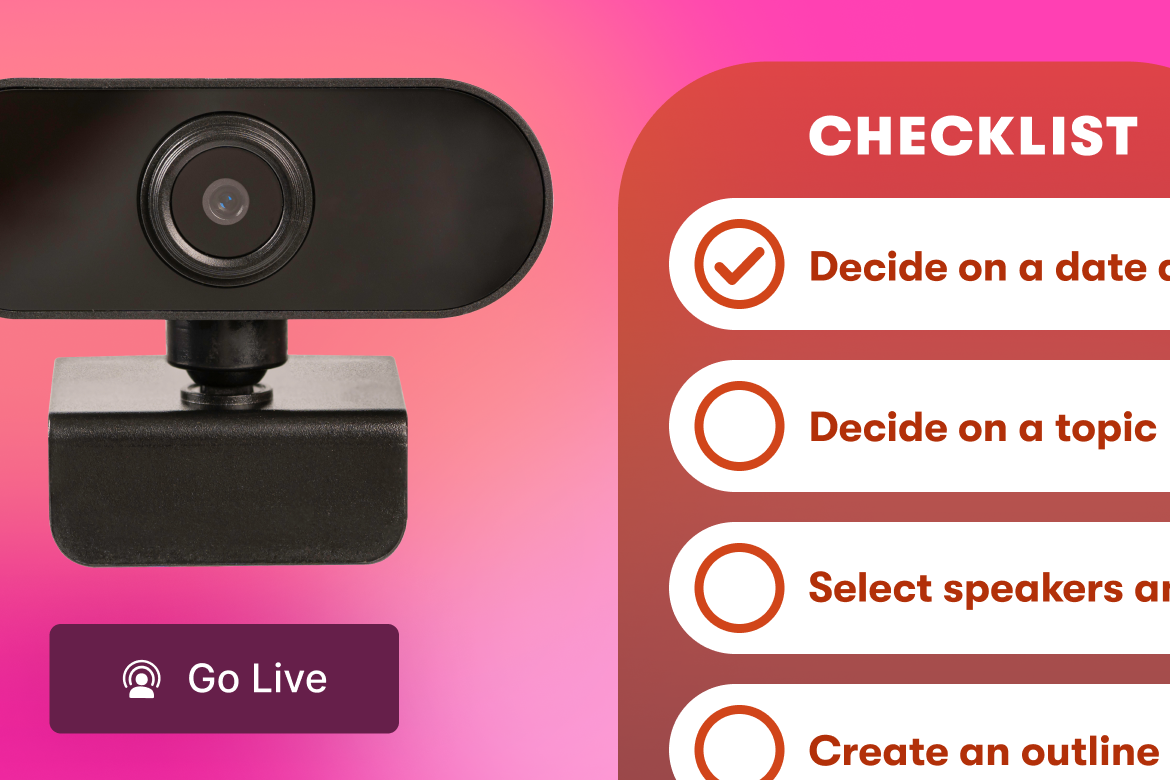Wistia's 7 Step Process for Greenlighting New Show Concepts
November 20, 2020
Topic tags
With more and more businesses investing in creating binge-worthy content, you might be looking for a more structured process for approving new show concepts that will help support your brand.
Lately, we’ve been pulling back the curtains to show you how our Wistia Studios team approaches show creation for our video series and podcasts like Brandwagon and Talking Too Loud. So, we chatted with our Lead Producer, Adam Day, and Development Producer, Sydney Rutman, to find out more about our team’s process for vetting and greenlighting show concepts.
Before you jump right into shooting or recording all of your fresh new ideas, check out this breakdown of the steps we take in our show creation process. These simple steps will help you land on the best idea that aligns with your brand and goals. Let’s take your content to the next level!
Step 1: Create your mandate
Before you ever start spitballing ideas around a room, it’s important to create a mandate, which is something that’s used by television networks and in-house production teams to develop concrete ideas for new shows.
Having a studio mandate will help your team (or outside creatives who work with you to produce content) brainstorm within defined guardrails. In your mandate, you should clarify the types of content you are looking for and the types of content you’re not looking for. Make sure you also identify your core audience groups and overarching themes an ideal show might accomplish to help support your brand. Lastly, be sure to mention your ballpark budget for what you’re willing to spend.
Now’s the time to set other limitations as well. If you already have a preferred format for your show — a video show versus a podcast — make it known! This will also inform who is involved in the project and who you might need to outsource to help get the project across the finish line.
Step 2: Hold an unstructured brainstorm
Now that you’ve got your mandate, set it aside (for now — you’ll bring this out again later to test your ideas against your mandate).
The next step is to hold an unstructured brainstorm. In an unstructured brainstorm, all ideas are welcome and nothing, we mean nothing, is off-limits. Oftentimes, the key component to successful brainstorming is to foster a creative environment where ideas are flowing freely.
During this stage, we like to get the five folks on our Studios team in a room (or on Zoom) to start throwing paint at the wall. Adam shared his insight on the process:
“50% of the time we come with a few ideas ready to go that we could pitch, which allows us to start riffing off one another. We follow each other’s lead, build off of ideas, and essentially throw fuel on the fire. Everyone gets really excited painting pictures of their ideas for one another, and someone can totally take it in another direction and put forth a new idea based on what someone says.”Adam Day
Lead Producer
We recommend recording everyone’s ideas in a single place that everyone can see. We like using whiteboards, but a wall of sticky notes, a shared Google Doc, or a good ol’ poster board and a marker will also do the trick!
Depending on how your creative team is structured, you might also invite stakeholders to your brainstorm — and this doesn’t necessarily mean your CEO or other executive members. Stakeholders can be your show host(s) or other people whose creative opinions you trust for ideating.
Overall, it’s better to keep your brainstorm relatively small if you’re a company similar to Wistia’s size (100–150 employees). If you open the floodgates for your entire company to be involved, the exchange of ideas can get out of control due to the excitement and energy. In other words, you don’t want too many cooks in the kitchen!
With your ideas all laid out, it’s time to give the people on your team the power to upvote which ideas they think are best.
Step 3: Hold a structured brainstorm
After you’ve narrowed down the best ideas from your unstructured brainstorm, it’s time to add a little more structure. We recommend giving a process-loving person the job of creating an agenda to help lead this next brainstorm session and keep things movin’ along. The structured brainstorm is used for fleshing out ideas or nailing down creative concepts to solidify ideas.
The Wistia Studios team will typically be more or less excited about a couple of ideas that came out of the unstructured brainstorm. They’ll take those winners and let their creativity take flight again to flesh out the ideas further.
Sometimes, there will be a clear winner! In this instance, they’ll re-take everyone’s temperature and see if the idea still feels good. From there, they’ll consider what it could actually look like, how it could work, and who else needs to be involved to move forward.
Step 4: Put your idea up against your mandate
Remember that mandate you created earlier? Now’s the time to dust it off and put it to work! Once you’ve identified the concepts you’re most excited about, it’s time to put them to the ultimate test.
An idea can be good or bad based on many different factors, but you can use your mandate to point yourself in the direction of a show idea that would be a better fit for your brand.
“An idea can be good or bad based on many different factors, but you can use your mandate to point yourself in the direction of a show idea that would be a better fit for your brand.”
You should look at your idea and see if it speaks to your target audience. If one of your ideas is far from center and not intended for your niche audience, will that idea help you accelerate your brand? After consulting your mandate, you might want to bid farewell to that concept.
You should also remind yourself of the overarching themes in your mandate. Does your idea fill one of those buckets and reflect what you want to accomplish with your content to support your brand. Ask yourself, how does this make sense for us?
Your mandate will help set you on the right path. Going through this process can help you build your case for why you have to create the show, which will be important when you’re creating your deck for a greenlight meeting (more on that later).
Step 5: Commit to paper
If your idea survives your mandate checkpoint, it’s time to commit the idea to paper in a more detailed way. This is when you’ll consider your show’s treatment.
There’s no set-in-stone way to create a treatment. It could be a Google Doc that reads like a document or a more buttoned up slide deck. Putting a treatment together is essentially telling a story and thinking about your grand vision for the show. The audience should walk away with a clear idea of what the show is about and what it’s going to feel like.
In a treatment, you should also include a log line, which is like an elevator pitch used to encompass your show’s concept. Other elements to provide that help tell your story are the show’s chosen format, creative inspiration or a mood board, and show characters or participants. Additionally, you should build the set of rules that your show will follow such as timelines, budgets, and estimated investments and resource commitments for the project.
Once you’ve committed your concept to paper, you can use this mini presentation as the basis for pitching your show externally or internally.
“When you’re thinking about pitching, you need to remember who you’re pitching to. For example, if someone in the room is numbers focused, you’ll want to include more numbers like your allocation of budget.” For external folks, including episode examples or samples of your past work can also help convey the story you’re trying to tell.”Sydney Rutman
Development Producer
Step 6: Advocate for the idea beyond your team
At Wistia, before we end up in a room with stakeholders who will give our idea the thumbs-up to move forward, there are very few surprises to the people we’re pitching to. We’ll lay the groundwork leading up to the meeting with exciting ideas and details so that by the time we get into the greenlight meeting, our stakeholders know what we’re excited about.
We’ll send our materials in advance for folks to read through everything and get on the same page before entering the room. We do this so it’s not necessarily the first time everyone’s seeing or hearing about our concepts.
Step 7: Present your idea at a greenlight meeting
During the official greenlight meeting, you’ll want to invite all relevant stakeholders. At Wistia, we include members of our executive team as well as our production team.
You’ll want to create your pitch deck and run through your presentation. Folks may see some of the materials for the first time — and that’s okay! It’s their time to express concerns. They could ask you to come back with an adjusted detail in the pitch, or give a thumbs up or down about a concept.
If your idea isn’t approved, don’t get discouraged. Get specific feedback about why the concept wasn’t approved, and be sure to bake that feedback into your mandate moving forward, if applicable. If you get a seal of approval, you can celebrate and start the planning process of actually seeing your show idea come to life.






